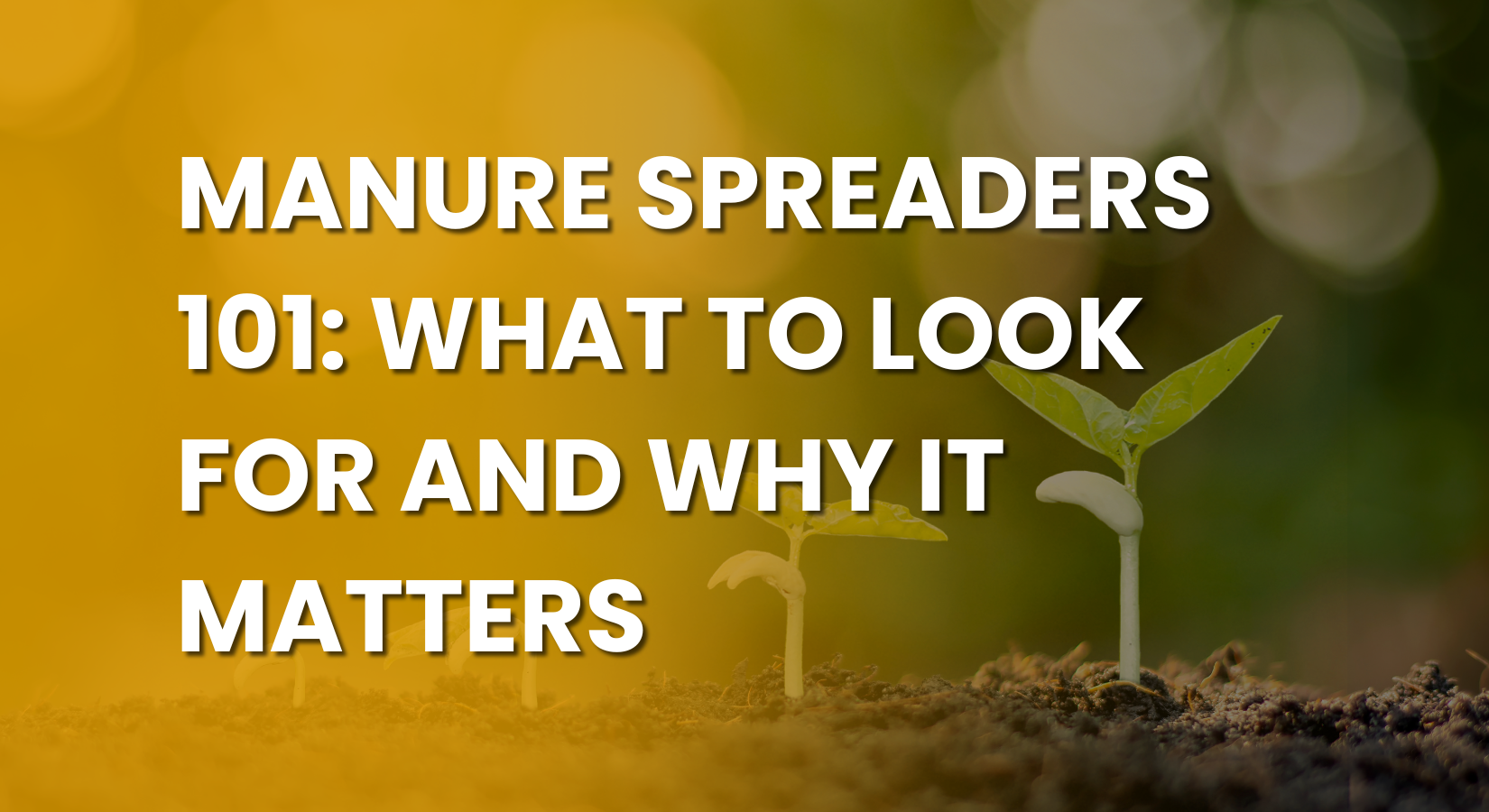Shopping for a manure spreader isn’t a one-size-fits-all situation. With so many models on the market—ranging in size, style, and performance—it all comes down to your specific needs. Whether you're managing a small-scale operation or a large farm, understanding what features matter most will help you choose a spreader that fits your workflow and your fields.
Let’s explore the most important factors to consider when buying a manure spreader.
It Starts with Your Operation's Needs
Before you pick a brand or a size, you need to answer one simple question: What are you spreading, and where are you spreading it?
Some of the key considerations include:
-
Farm size and scale
-
Type of manure (solid, semi-solid, composted, etc.)
-
Frequency of spreading
-
Crop coverage and residue sensitivity
-
Field terrain and conditions
For instance, smaller farms might benefit from compact, ground-driven spreaders, while larger operations may need PTO-powered, high-capacity models.
Vertical vs. Horizontal Beaters
One of the biggest decisions you’ll make is whether to go with horizontal beaters (conventional) or vertical beaters, each with their own strengths.
Horizontal Beaters
-
Often found in traditional box spreaders
-
Great for heavier materials and less precision applications
-
More economical and simpler to maintain
Vertical Beaters
-
Preferred when applying manure on growing crops or sensitive fields
-
Provide more uniform and wide dispersion
-
Ideal for covering large areas smoothly with minimal clumping
"We typically prefer the vertical beater spreaders when we're spreading on ground that has a growing crop on it, and we need to disperse that stuff as smoothly and evenly as possible." - The Forage Guy
Consider the Manufacturer
There are plenty of solid brands out there, but one company that’s stood out in The Forage Guys' experience is Pik Rite out of Pennsylvania. They manufacture a wide variety of manure spreaders that meet diverse needs—whether you're looking for compact precision or high-volume capacity.
But remember: it’s not about the name—it’s about the right fit for your manure type, crop requirements, and land layout.
Get the Right Gear for the Job
Once you’ve chosen your manure spreader, make sure you’ve got the parts and supplies to keep your hay and forage systems running strong. At Agzaga.com, you can find:
Agzaga is your online shop for everything from planting to harvesting and beyond.
Final Thoughts
Choosing the right manure spreader depends on your materials, your fields, and your goals. From vertical vs. horizontal beaters to capacity and control, take the time to match your spreader to your operation for long-term efficiency and performance.
For more tips on equipment selection, forage strategies, and all things hay, be sure to visit forageguy.com.
